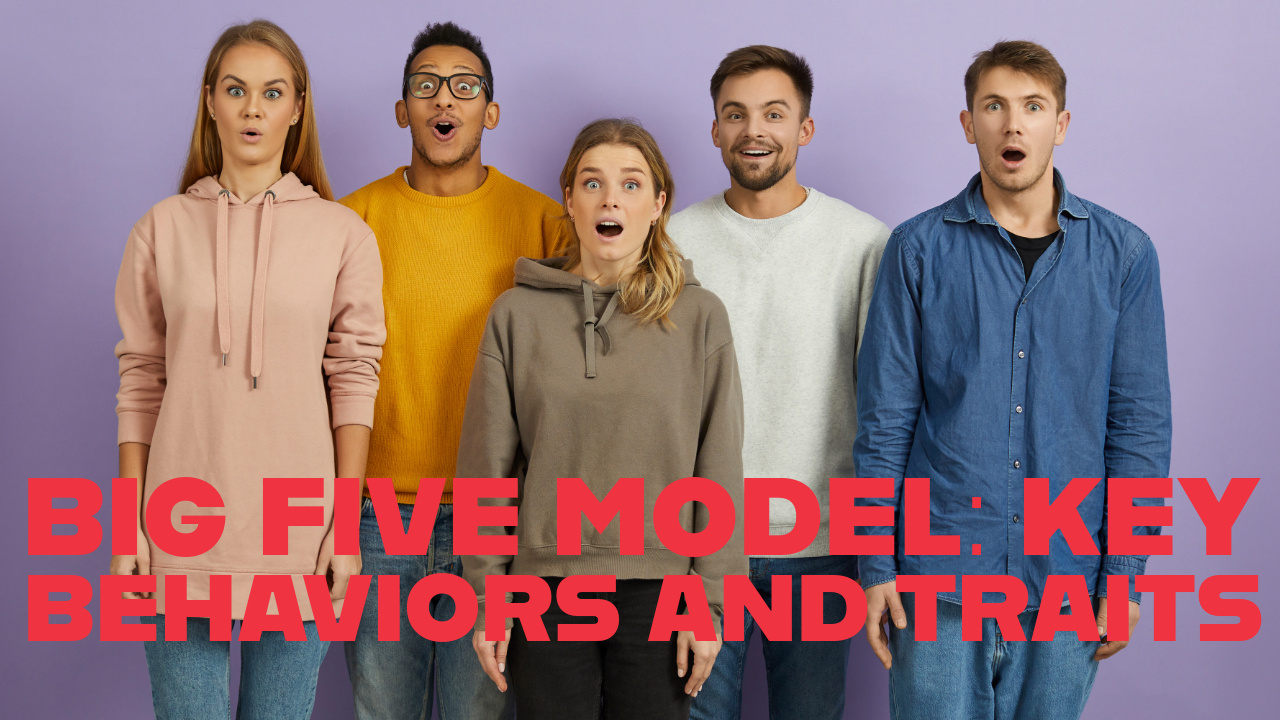2 min read
How The Predictive Index Maps to the Big Five Personality Traits
The Predictive Index (PI) and the Big Five personality traits are both powerful frameworks for understanding human behavior. While PI is designed...
4 min read
Damon Clark : Nov 12, 2024 3:00:00 PM

Understanding Personality through the Big Five Model: Key Behaviors and Traits
When it comes to understanding personality in a nuanced way, the Big Five personality model is widely recognized in psychology and the workplace. Also known as the Five-Factor Model (FFM), the Big Five assesses five key dimensions of personality that influence a person’s behavior, thoughts, and emotions. By diving into these specific traits—Openness, Conscientiousness, Extraversion, Agreeableness, and Neuroticism—we gain insights that help explain why people respond differently to similar situations.
Key Traits: Creativity, Curiosity, Imagination, Open-mindedness
Individuals who score high on Openness tend to be creative, curious, and open to new ideas, experiences, and unconventional thinking. They thrive in dynamic environments where they can explore possibilities, innovate, and push boundaries. On the flip side, those with lower Openness scores may be more traditional, preferring familiar routines, practical approaches, and a structured work environment.
Behaviors in the Workplace:
Key Traits: Organization, Discipline, Reliability, Goal-oriented
Conscientious individuals are highly organized, disciplined, and driven by achievement. They value structure and take a meticulous approach to their work, often excelling in roles requiring attention to detail and self-management. In contrast, those with lower Conscientiousness may be more spontaneous and adaptable, but they may struggle with organization and long-term planning.
Behaviors in the Workplace:
Key Traits: Sociability, Assertiveness, Enthusiasm, Energy
Extraverts are social, outgoing, and energized by interaction with others. They enjoy teamwork, are often seen as enthusiastic leaders, and bring energy into group settings. Introverts, on the other hand, may be quieter, more reflective, and prefer solo or small-group work. They tend to be deep thinkers, thriving in roles where they can focus without constant social engagement.
Behaviors in the Workplace:
Key Traits: Compassion, Cooperation, Trust, Empathy
Highly agreeable individuals are compassionate, cooperative, and team-oriented. They prioritize harmonious relationships, often willing to compromise and assist others. Low Agreeableness, on the other hand, doesn’t imply a lack of kindness but suggests a tendency to be more direct, competitive, and focused on objective results over maintaining harmony.
Behaviors in the Workplace:
Key Traits: Emotional reactivity, Resilience, Stress tolerance, Mood regulation
Neuroticism reflects a person’s tendency toward emotional volatility and stress sensitivity. Those who score high on Neuroticism may experience frequent mood swings, stress, and worry. In contrast, individuals with high Emotional Stability (low Neuroticism) are generally calm, resilient, and able to maintain equilibrium under pressure.
Behaviors in the Workplace:
The Big Five model is often used in hiring, coaching, and team-building because each trait contributes unique strengths and potential challenges in a professional setting. Understanding these traits can help managers create balanced teams where each member’s natural tendencies complement others. It can also support personal growth by allowing employees to recognize their strengths and areas for improvement.
For example:
The Big Five personality model is an invaluable tool for understanding how different personality traits affect behavior in both personal and professional environments. By recognizing and valuing these traits, organizations can build cohesive teams, optimize individual strengths, and foster a culture that appreciates diverse work styles. This leads to a more engaged, productive, and harmonious workplace where each individual can thrive in a role that fits their personality traits.
|
|

2 min read
The Predictive Index (PI) and the Big Five personality traits are both powerful frameworks for understanding human behavior. While PI is designed...
%20blog.jpeg)
3 min read
Tools like the Predictive Index (PI) provide valuable insights into personality traits related to workplace behaviors, like assertiveness, dominance,...

2 min read
Tools like the Predictive Index (PI) have become instrumental in assessing and predicting workplace behaviors and dynamics. While such tools offer...